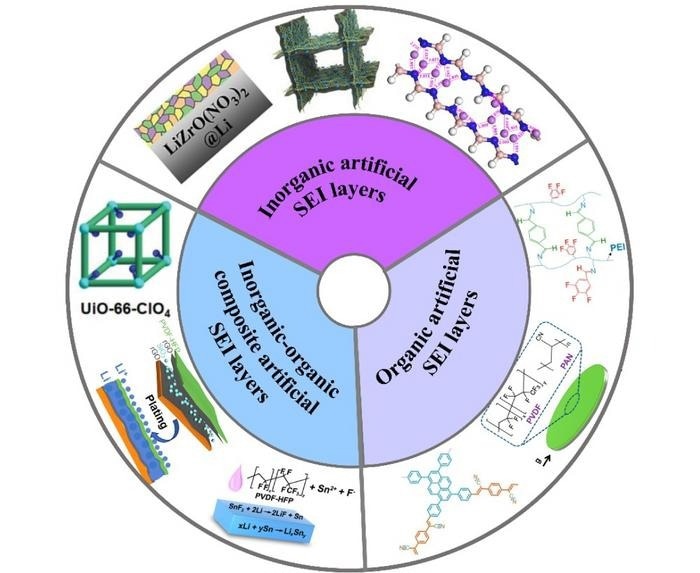Utilizing lithium metal as the anode in batteries stands out as an intelligent choice due to its superior energy density compared to other materials.

Each wedge consists of different constructions of electrode-electrolyte interfaces to contribute to a practical design overhaul of lithium metal electrodes.Image Credit: Yanyan Wang, University of Adelaide
However, challenges exist at the interface between the electrode and electrolyte, presenting certain issues that need to be addressed for a safer and more efficient outcome in the future.
The researchers are actively exploring the replacement of the graphite anode with a lithium metal anode in order to create a battery system with higher energy density. However, the lithium metal anode poses challenges due to its instability and its tendency to react with the electrolyte, forming a solid-electrolyte interphase (SEI).
Unfortunately, the natural SEI is brittle and fragile, leading to poor lifespan and performance of the battery. To address this issue, scientists have investigated an alternative to the natural SEI, aiming to effectively mitigate side reactions within the battery system.
The solution comes in the form of an artificial solid electrolyte interphase (ASEI). It addresses some of the issues associated with the bare lithium metal anode, resulting in a safer, more reliable, and even more powerful power source. This advancement instills greater confidence in the use of lithium metal anodes for applications such as electric vehicles.
Scientists published their research in Energy Materials and Devices on September 25, 2023.
Battery technologies have been revolutionizing our lifestyle and are closely related to everyone’s life. To realize a truly carbon-free economy, batteries with better performance are required to replace current Li-ion batteries.
Yanyan Wang, Author and Researcher, School of Chemical Engineering and Advanced Materials, University of Adelaide
Lithium metal batteries (LMBs) emerge as a promising candidate for high-performance energy storage. However, a notable challenge lies in the reactivity of the anode, lithium metal, with the electrolyte, resulting in the formation of a passivation layer known as a solid-electrolyte interphase during battery operation.
Another issue associated with the lithium metal anode is the occurrence of “dendrite growth” during battery charging. Dendrites manifest as tree-branch-like structures, causing internal damage to the battery and leading to issues such as short-circuiting, diminished performance, and potential safety hazards. Thus suggesting solutions to address these weaknesses and enhance their overall reliability and safety.
A more effective and safer lithium metal anode can be created by applying some of the techniques. Scientists found it is necessary to regulate the distribution of lithium ions to reduce the deposits in negatively charged areas of the batteries for enhancing the lithium metal anode.
This ends in diminishing the dendrite formation, thus preventing premature decaying and short-circuiting. The layers are electrically insulated to help maintain the integrity of the structure, both physically and chemically, during battery cycling. This is an easier way for the lithium ions to diffuse.
Proper connectivity between the layers is guaranteed by reducing the strain between the interface of the electrode and electrolyte, which is an essential part of the functionality of the battery.
The outlook for ASEI layers in lithium metal batteries appears promising, but there is room for improvement.
Researchers are particularly interested in enhancing the adhesion of ASEI layers to the metal surface, aiming to improve overall battery function and lifespan. Additional areas requiring attention include ensuring stability in the structure and chemistry within the layers, along with minimizing the thickness of the layers to enhance the energy density of the metal electrodes.
Addressing these issues holds the potential to pave the way for significant advancements in lithium metal batteries, leading to improved performance and durability.
Yanyan Wang, Mingnan Li, Fuhua Yang, Jianfeng Mao, and Zaiping Guo from the School of Engineering and Advanced Materials at the University of Adelaide contributed to this research.
Journal Reference
Wang, Y., et al. (2023). Developing artificial solid-state interphase for Li metal electrodes: recent advances and perspective. Sciopen. doi.org/10.26599/EMD.2023.9370005.